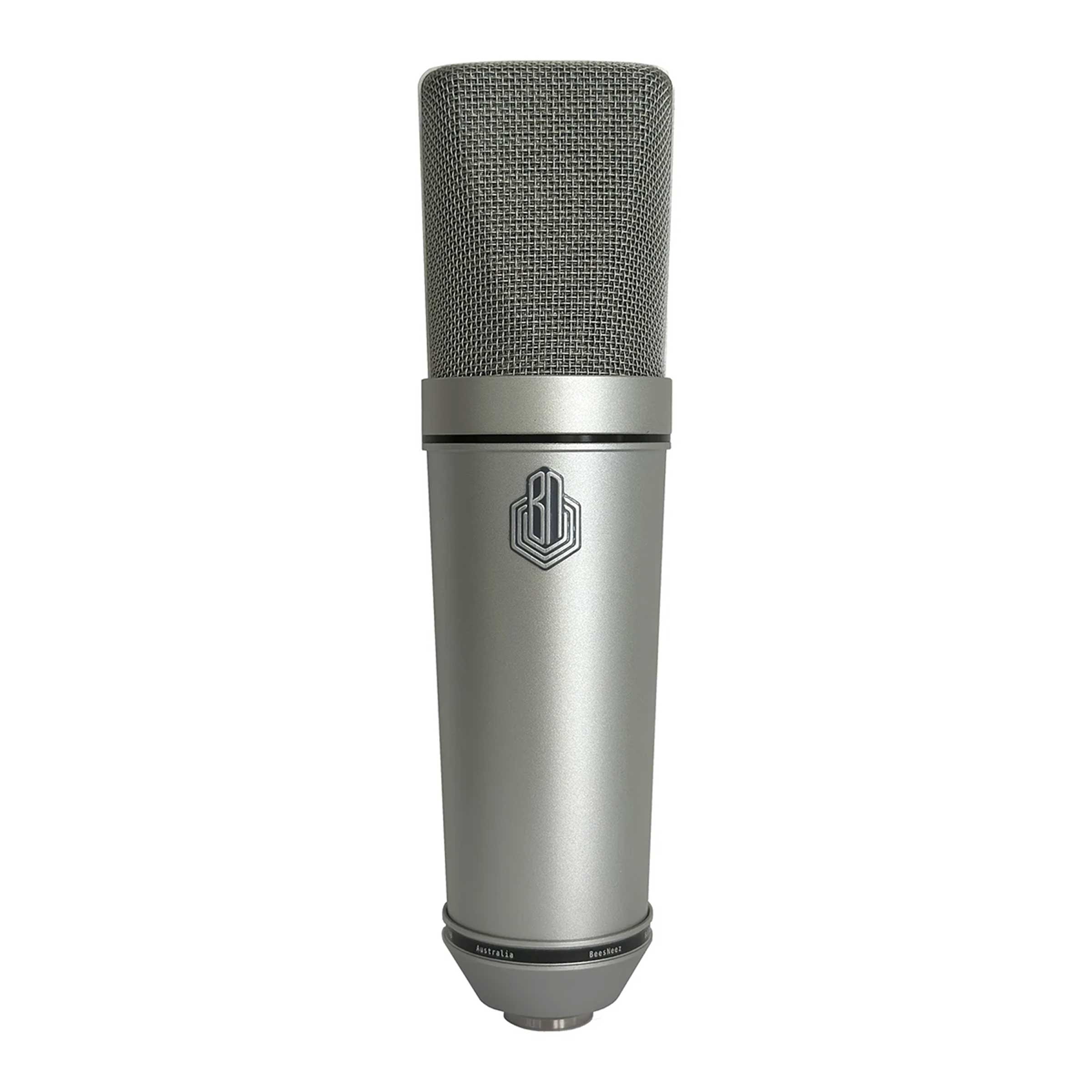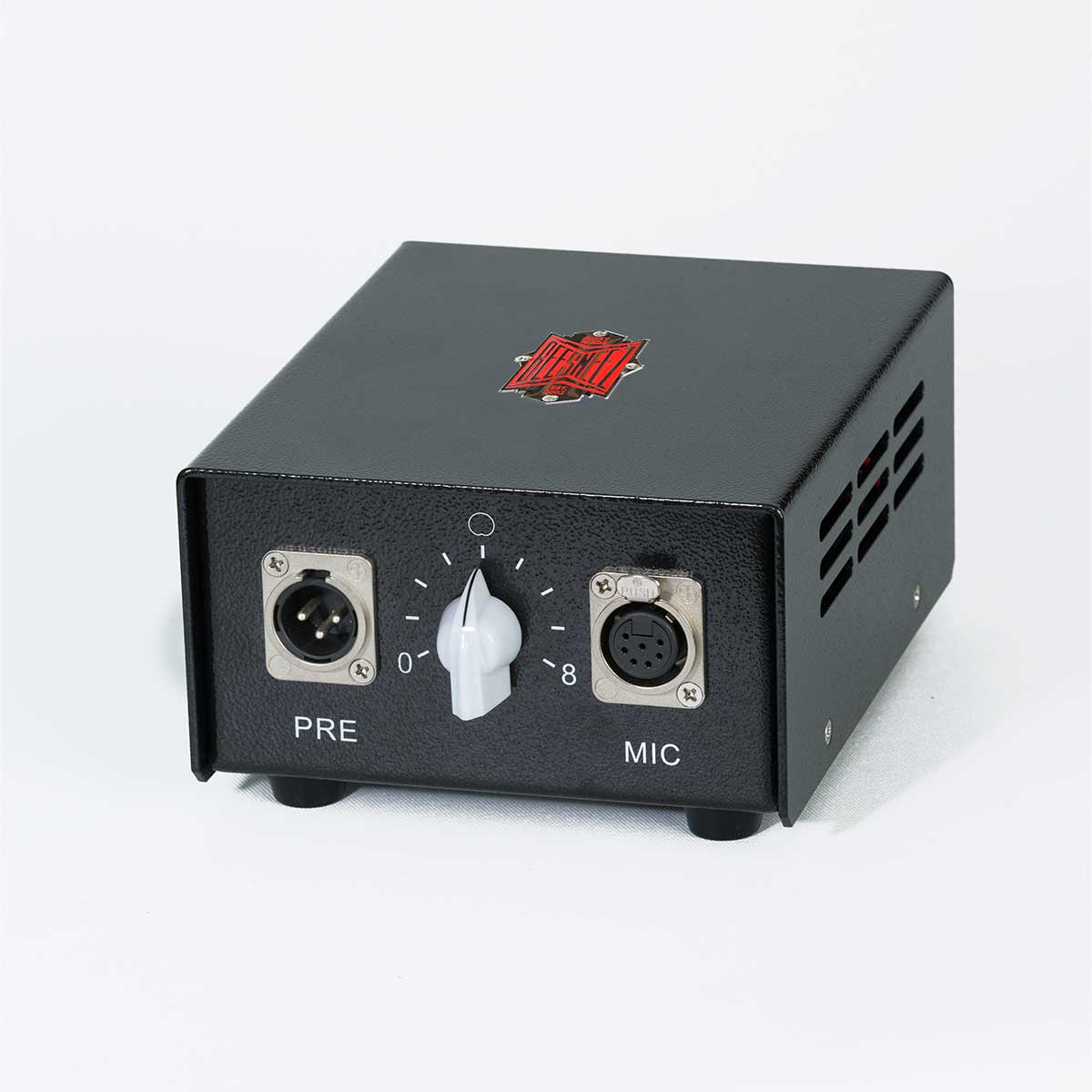BeesNeez B67-269 V2
The BeesNeez B67/269 is our second version that captures the essence of the U67, which was first released in 1960. This microphone has a slightly larger body size to the first version released by BeesNeez. In this second edition of this amazing microphone, we have introduced an Old and New switch. This new switch allows for Old and New voicing for both 67 and 269 modes. In the Old mode, the voicing will sound like the version 1 of the B67 (like the original U67 or M269). When the New mode is switched and the microphone is set to 67, more air will be introduced as well as a gentle rise in the high mids. When the New mode is switched and mic is set to 269, more air and a boost in the lower mids are introduced. This new mode means that the B67/269 now has 4 voices and will make its way to being perhaps the most versatile tool in your mic locker.
There are 3 main areas of any microphone that give it character: the capsule, the circuitry, and the impedance conversion. The combination of these three in varying degrees allows the design team to add and/or remove frequencies. This design flexibility makes anything possible!
The Capsule
We are using the BeesNeez K6 capsule. This capsule has been made in-house by our team for over 15 years and has been supplied to third-party manufacturers and also used in models of our own microphones (The Mahalia, The Shelise and The Isobel). This capsule is a recreation of the very same capsule that was in the Neumann U67, which is known as the K67. In this application, the capsule represents more than 80% of the overall sound.
The Tube
The tube used in the U67 microphone is the EF86. This tube is well-known for its low noise and pleasant amplification at audio frequencies. In fact, it was one of the very few tubes that was designed specifically for audio frequencies rather than the more generic wider frequency ranged medium and sharp cut off pentodes and general use triodes that have been made by the millions and many of which are used by microphone manufacturers today. The BeesNeez team has spent decades searching for and researching tubes for microphones. The benefits of this can be heard across the entire range. For this particular model, we really have made an exciting find.
In the post-war 1940’s, Brimar and Mullard set out to specifically design and manufacture an incredibly quiet EF86 based tube. This tube was designed to have the lowest possible self-noise and still remain true to the specifics and design of the EF86. In order to keep the self-noise as low as possible, the tube’s grid (where the soundwaves enter the tube to be amplified) was re-designed to leave the tube through the head rather than, as it was previously, from the base. This design improvement (also seen on the AC701K microphone vacuum tube) was a distinct advantage as it keeps the low level easily permeable incoming audio away from the noise associated with the heating element of the tube. Sadly, due to the changes that would be needed by product manufacturers to use this new design, it never took off as a widely used variant. The tube manufacturer then aimed its sights at the DIY audio amplifier market. However, this also didn’t take off, so the design was shelved and the remaining tubes were stored. After researching and trialing this tube in the B67-269, we bought them all and will have enough tube stock to support this model throughout its very long lifetime.
This tube is a real game changer for us as EF86 tubes are getting so hard to purchase in usable quantities and many of those that are available today are either noisy or fail to pass the necessary tests to be used in a microphone. There are some currently manufactured EF86 tubes, but these do not even come close to the beauty of their vintage counterpart and do not even get a look in. Our Brimar/Mullard 86 designated tube is truly a remarkable tube and is so perfect for this application.
The Transformer
Due to the enormous success of the B87i C microphone – largely stemming from its huge toroidal transformer, we decided to use this form factor also in the B67-269. The benefits of this transformer type are numerous, giving us a great platform to ensure excellent impedance conversion and perfect common mode rejection in signal balancing. The original U67 used a BV12 UI30 core transformer. This original transformer had a third winding that was used in a negative feedback filter network to assist in the overall sound sculpting. Most clone manufacturers omit this tertiary winding (due to its complexity) and opt for a simple circuit. To make a truly accurate clone microphone, we use this tertiary winding in the same way it was initially used. This winding is a huge part of the overall sound of the Neumann U67.
The Circuit
In many microphones, the circuit represents merely a few percentage points. This, to some extent, is also true in the U67. However, this circuit, unlike many others, does direct the audio flow into various feedback and filter componentry and, even though the sonic footprint of the circuit is negligible, the overall implementation is critical to the finished sonics of the U67. Our circuit is true to form, and all filters/feedback are in place. For the more critical user, our circuit also has the following switching: Broadcast filter, High pass filter and Pad. The B67-269 is also a multipattern microphone with 9 available patterns from Omni through to Cardioid and Figure 8.
Compared to other models, there are relatively few U67 clone microphones available today. It has been said that this is due to similar microphones still being currently produced. However, it is more likely due to the complexity of the circuit and sound of the venerable U67. It should be noted that if any part of the original circuit is omitted, then the overall result cannot be achieved.
We are so pleased to be able to offer this great microphone to the market and look forward to the many fine recordings that will be made.
What’s Included:
▶ BeesNeez B67-269 Microphone
▶ BeesNeez Producer Series Shock Mount
▶ BeesNeez Producer Series Power Supply
Specifications:
- Capsule Type: BeesNeez K6 Microphone Capsule
- Frequency Range/Sensitivity: 15Hz – 20kHz
- Sensitivity at 1kHz @1 kohm: 24mV/Pa Typical
- Tube: CV4006 Brimar/Mullard. (This tube is a quieter version of the EF86 with a different pin configuration.)
- Acoustic Operating Principle: Pressure gradient transducer
- Polar Pattern: 9 Polar Patterns
- Equivalent Noise Level: 28 dB
- Equivalent Noise Level A-weighted: 17 dB-A
- Signal-to-noise ratio: 67 dB
- Maximum SPL for THD at 0.5%: 117 dB (cardioid)
- Maximum SPL for THD at 0.5% with pad: 127 dB
- Maximum Output Voltage: 390 mV (-9.8 dBu)
- Dynamic range A-weighted: 105 dB
- Impedance: 200 ohm
- SPL: Max SPL: 125dB
- Power requirements: 120V/240V


